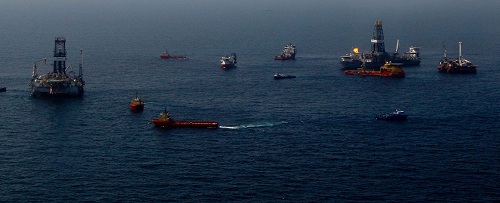That’s because the fortunes of most U.S. natural gas producers are pegged to the nation’s benchmark gas price, which slipped almost 9% since June.
Meanwhile, companies like ExxonMobil Corp.’s partner Oil Search Ltd. sell most of their output to Asian customers linked to crude prices, which are up about 40% over that period. About 70% to 80% of Royal Dutch Shell Plc’s LNG is priced off oil, Chief Financial Officer Jessica Uhl said last week. And about two-thirds of BP Plc’s gas portfolio is oil-linked, Chief Executive Officer Bob Dudley said Tuesday.
The dichotomy is a relic of LNG’s early days, when it competed against oil and lacked an internationally-accepted benchmark. The fundamentals of the two have deviated in recent years, as the Organization of Petroleum Exporting Countries and its allies cut output to tighten the oil market, while new LNG projects worsen a glut.
“The LNG market is facing the prospect of widely diverging prices,” said James Taverner, an IHS Markit energy analyst in London.
As OPEC-led cuts pushed Brent briefly above $70/bbl earlier this year, Morgan Stanley was among banks to recently lift 2018 price forecasts, saying they could average $75 in the third quarter.
Costlier oil
At $75, LNG priced at 13% of Brent — a common ratio — would cost $9.75/MMBtu. The benchmark crude will average 16% higher this year, according to the median of forecasts compiled by Bloomberg, which would be equivalent to about $8.27/MMBtu.
Meanwhile, U.S. Henry Hub prices are seen 1.7% higher this year at $3.07/MMBtu. And a slate of new export projects coming online and softer summer demand means spot LNG — that is, not bought through long-term contracts — will average $5.90/MMBtu this year in Singapore, BMI Research said in a Jan. 4 note, compared with an average $6.803 last year.
Australia’s Woodside Petroleum Ltd. sells more than 90% of its LNG through oil-linked contracts, Chief Executive Officer Peter Coleman said in an interview. Shell’s Uhl said the benefits of higher oil will be seen in first quarter results because the price feeds through on a lag of three to four months. Woodside and Oil Search also flagged a three-month delay.
Qatar, the biggest LNG supplier, also has a majority of its sales linked to oil, according to data compiled by Bloomberg New Energy Finance. State-owned Qatar Petroleum didn’t respond to a request for comment.
A similar gulf between oil and gas in Europe last decade led to adjustments in long-term contracts and gas hubs gaining greater roles, said IHS’s Taverner.
But a similar transformation in Asia will be difficult, said Poorna Rajendran, a Singapore-based analyst for energy consultant FGE. While Asian prices such as S&P Global Platts’ Japan-Korea Marker and Singapore Exchange Ltd.’s Sling Index are gaining traction, they lack the necessary liquidity and transparency.
“Although a number of potential benchmarks are springing up in the region, as of now they’re still very underdeveloped and illiquid,” said Emma Richards, senior oil and gas analyst for BMI. “As a result, prices are lumpy, volatile and vulnerable to distortion.”



















































